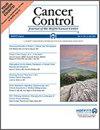The Association of Oncology Provider Density With Black-White Disparities in Cancer Mortality in US Counties
IF 2.5
4区 医学
Q3 ONCOLOGY
引用次数: 0
Abstract
BackgroundBlack-White racial disparities in cancer mortality are well-documented in the US. Given the estimated shortage of oncologists over the next decade, understanding how access to oncology care might influence cancer disparities is of considerable importance. We aim to examine the association between oncology provider density in a county and Black-White cancer mortality disparities.MethodsAn ecological study of 1048 US counties was performed. Oncology provider density was estimated using the 2013 National Plan and Provider Enumeration System data. Black:White cancer mortality ratio was calculated using 2014-2018 age-standardized cancer mortality rates from State Cancer Profiles. Linear regression with covariate adjustment was constructed to assess the association of provider density with (1) Black:White cancer mortality ratio, and (2) cancer mortality rates overall, and separately among Black and White persons.ResultsThe mean Black:White cancer mortality ratio was 1.12, indicating that cancer mortality rate among Black persons was on average 12% higher than that among White persons. Oncology provider density was significantly associated with greater cancer mortality disparities: every 5 additional oncology providers per 100 000 in a county was associated with a .02 increase in the Black:White cancer mortality ratio (95% CI: .007 to .03); however, the unexpected finding may be explained by further analysis showing that the relationship between oncology provider density and cancer mortality was different by race group. Every 5 additional oncologists per 100 000 was associated with a 1.6 decrease per 100 000 in cancer mortality rates among White persons (95% CI: −3.0 to −.2), whereas oncology provider density was not associated with cancer mortality among Black persons.ConclusionGreater oncology provider density was associated with significantly lower cancer mortality among White persons, but not among Black persons. Higher oncology provider density alone may not resolve cancer mortality disparities, thus attention to ensuring equitable care is critical.美国各县肿瘤科医生密度与癌症死亡率黑白差异的关系
背景在美国,黑人和白人在癌症死亡率方面的种族差异是有据可查的。据估计,未来十年内肿瘤学家将出现短缺,因此了解肿瘤治疗的获取途径如何影响癌症的差异具有相当重要的意义。我们旨在研究一个县的肿瘤医疗机构密度与黑人-白人癌症死亡率差异之间的关系。我们使用 2013 年国家计划和提供者查点系统数据估算了肿瘤科提供者的密度。黑人与白人的癌症死亡率比值是根据各州癌症概况中 2014-2018 年年龄标准化癌症死亡率计算得出的。构建了带有协变量调整的线性回归,以评估提供者密度与(1)黑人:白人癌症死亡率比率,以及(2)总体癌症死亡率和黑人与白人癌症死亡率的关联。肿瘤科医生的密度与癌症死亡率的差异明显相关:每 10 万人中每增加 5 名肿瘤科医生,黑人与白人的癌症死亡率比值就会增加 0.02(95% CI:0.007 至 0.03);然而,进一步的分析表明,肿瘤科医生的密度与癌症死亡率之间的关系因种族群体而异,这或许可以解释这一意外发现。每 10 万人中增加 5 名肿瘤学家,白人的癌症死亡率就会下降 1.6(95% CI:-3.0 至 -.2),而肿瘤医生密度与黑人的癌症死亡率无关。仅靠提高肿瘤治疗提供者的密度可能无法解决癌症死亡率差异问题,因此关注确保公平治疗至关重要。
本文章由计算机程序翻译,如有差异,请以英文原文为准。
求助全文
约1分钟内获得全文
求助全文
来源期刊

Cancer Control
ONCOLOGY-
CiteScore
3.80
自引率
0.00%
发文量
148
审稿时长
>12 weeks
期刊介绍:
Cancer Control is a JCR-ranked, peer-reviewed open access journal whose mission is to advance the prevention, detection, diagnosis, treatment, and palliative care of cancer by enabling researchers, doctors, policymakers, and other healthcare professionals to freely share research along the cancer control continuum. Our vision is a world where gold-standard cancer care is the norm, not the exception.
 求助内容:
求助内容: 应助结果提醒方式:
应助结果提醒方式:


